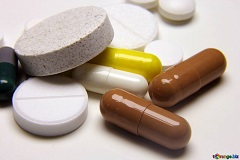By the end of 2019, both USA and EU became aware of their dependence on China and India in generic medicines supply. Particularly the dependence on China was judged to be worrisome, as their share doubled to 13% in ten years’ time and because of the mounting trade war with the US. The warnings did not spark off action right away, but in view of the corona crisis, people are alarmed. Which options do EU and USA have to reduce this dependence?
This is the fourth of four articles on the pharmaceutical industry.

Wake-up call
With the corona crisis in retreat (hopefully), many ideas surface to reduce our dependence in China and India. Although there are no signs of any shortages yet. In medicines supply, parties tend to stock ample supplies; modern arrangements like JIT are absent. Therefore, there is no question of shortages yet, even though many Chinese factories have had to close their doors because of the pandemic. And now, most factories are in business again. Any delays or shortages will still have to show. In short, a wake-up call.
Generic medicines
European scientists estimate that up to 80% of chemicals used in European medicines supply, are imported from India or China. In both USA and EU, the majority of these are generic medicines. This implies that if supply chains are disrupted, large numbers of patients will be affected. India supplies 40% of all generic medicines, world-wide.
In style with the present China policy, US government prepares all kinds of legislation intended to guarantee an independent supply. They take international weapons control as a model in this field. In practice, FDA already asks American suppliers how reliable their supply chains are. In Europe, some stakeholders propose to shorten approval procedures in order to start up European production facilities. Industry in turn asks for a world-wide level playing field, or for subsidies. Ironically, these often are the same companies that contracted out their production to India or China, quite recently.

A new round of international competition
But do we really need strong measures? Both US and EU still have many facilities; many companies own facilities in India and/or China or have a majority share. Moreover, India is in the process of reducing its dependence on Chinese chemicals; it was too much of a risk to import 70% of resources from China for its factories of generic medicines. Corona wasn’t the immediate cause, but an earlier Chinese action to enforce better health and safety procedures, that caused temporary supply problems. In Europe, well-known producers like Lonza, Siegfried, Hovione and a number of Italian companies are active in creating new supply and production chains. Stimulated by faster regulatory EMA procedures and the intention to apply mainly sustainable green chemical processes, supported by EU subsidies if available. Their concern is that China might apply these green chemical processes even faster. The huge local market and the growing environmental awareness are their main driving forces. India in turn, also with a huge local market, will no doubt join this competition. According to C&E News, the US may not follow suit, in spite of all rhetoric. There, capitalism and making (much) money are of the utmost importance; and then, companies will favour production of the most recent medicines, that make the biggest profits because of their protection by patents.
A positive outcome
The insight that dawned end 2019 and the wake-up call by the corona pandemic might lead to a new equilibrium between China, India and the EU in the production of all generic and major medicines. Developments seem to indicate a ‘healthy’ competition, resulting in an assured supply with generic medicines, at reasonable prices and produced by sustainable green chemical processes. In the area of the latest, patented medicines, there will be an entirely different battle, with the US as the main actor and sky-high prices as the main area of conflict.
Interesting? Then also read:
Towards a sustainable medicines production
The shelf life of green chemistry
New superpowers in the pharmaceutical industry?
